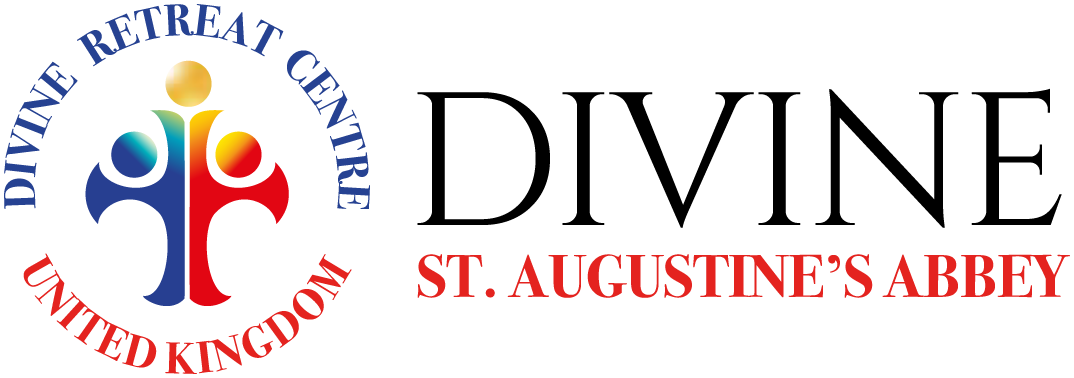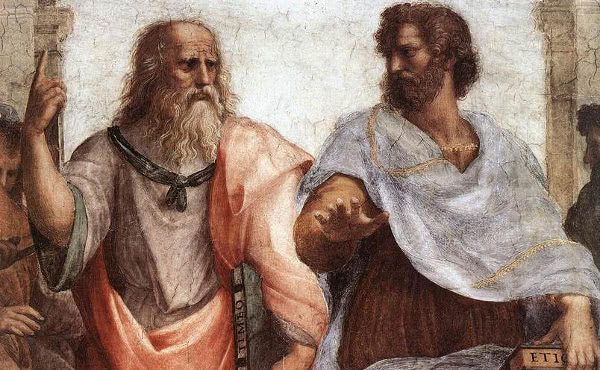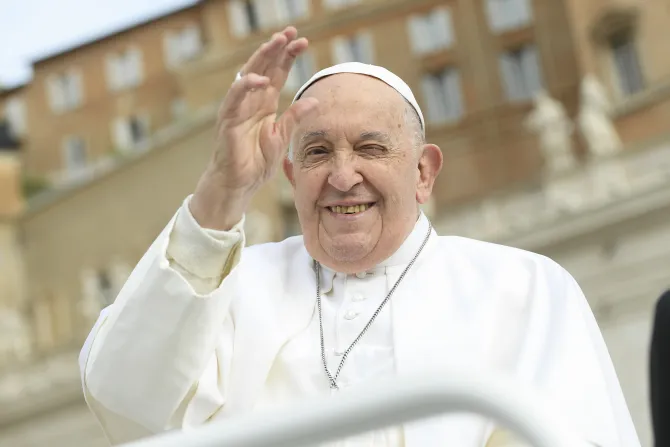Divine Retreat Centre UK – Official Website
Shadows of the Holy Eucharist — Passover
September 27, 202224th Sunday In Ordinary Time YEAR C
September 27, 2022Worship is a very important aspect in Christian faith and spirituality. Why? God created man for God. “God created humankind in his image, in the image of God he created them; male and female he created them” (Genesis 1:27). Man, as “the image and reflection of God” (1 Corinthians 11:7), has the capacity to recognize God and to stand in awe of Him and all His works. Worship, therefore, is a natural response, an inclination of the heart to praise God for His glory that is reflected in His creation. “For what can be known about God is plain to them, because God has shown it to them. Ever since the creation of the world his eternal power and divine nature, invisible though they are, have been understood and seen through the things he has made” (Romans 1:19-20). Deep within ourselves, we already have that conviction of the reality of God and are drawn to Him, to know Him, to honor Him as God, and give thanks to Him.
In the Old Testament, we understand worship as expressed by the people through acclamations, songs, dances, playing music or by showing gestures of reverence for God. “O come, let us worship and bow down, let us kneel before the Lord, our Maker!” (Psalm 95:6). “O come, let us sing to the Lord; let us make a joyful noise to the rock of our salvation!” (Psalm 95:1). She “took a tambourine in her hand; and all the women went out after her with tambourines and with dancing, and sang “Sing to the Lord, for he has triumphed gloriously” (Exodus 15:20-21). Before the Ark of the Covenant, we see “King David leaping and dancing before the Lord” (2 Samuel 6:16).
These gestures of worship are still valid and continuously being practiced today by devout worshippers of God. But, in the original context of the word, worship goes beyond than just singing and dancing. The very first time it was mentioned in the Bible, worship meant sacrifice. “Then Abraham said to his young men, “Stay here with the donkey; the boy and I will go over there; we will worship, and then we will come back to you” (Genesis 22:5). Later, in Exodus, worshipping God through sacrifice—the sacrifice of a lamb—was concluded by eating it with bread. “They shall eat the lamb that same night; they shall eat it roasted over the fire with unleavened bread and bitter herbs” (Exodus 12:8).
Later, as the Israelites were journeying towards the Promised Land, all the provisions they had for worship as well as for sustenance came from God. In the wilderness, they received something which they called “Manna” for their daily bread. Bread, in the Jewish tradition, is not just something that they partake of in order to fill their stomach. Bread has to do with the covenant of God. “You shall observe the festival of unleavened bread, for on this very day I brought your companies out of the land of Egypt: you shall observe this day throughout your generations as a perpetual ordinance” (Exodus 12:17). Bread symbolized the deliverance of God’s people from slavery. “‘It is the Passover sacrifice to the Lord, for he passed over the houses of the Israelites in Egypt, when he struck down the Egyptians but spared our houses.’” And the people bowed down and worshipped” (Exodus 12:27). It’s a simple formula: bread = passover = sacrifice = worship.
So, if the bread (the old manna) was provided through Moses, the shadow of Jesus, it simply follows that the Bread of Life that Jesus offered in the New Testament is the New Manna. Today, we know this bread—the Bread of Life—that is, Jesus Christ himself, to be the center of our worship in the “Holy Sacrifice of the Mass” or the “Holy Eucharist”. This only means one thing: by giving us the New Manna, the new bread that came from heaven, Jesus has already fulfilled the scriptures! Let us learn how the old manna foreshadowed the new manna so that we may understand the hidden power of deliverance that the Lord provides with the Bread of Life.
1. The old manna was given to fill the people’s hunger; the new manna was sent by God so that people will never hunger or thirst-
In the Old Testament, when the Lord brought the Israelites out of their slavery in Egypt, His purpose was to make them worship God in the wilderness. Moses said, ‘The Lord, the God of the Hebrews, sent me to you to say, “Let my people go, so that they may worship me in the wilderness” (Exodus 7:16). When the Israelites had finally been set free, they began journeying in the wilderness and complained for food. “The Israelites said to them, “If only we had died by the hand of the Lord in the land of Egypt, when we sat by the fleshpots and ate our fill of bread; for you have brought us out into this wilderness to kill this whole assembly with hunger” (Exodus 16:3). The Lord heard their complaint and the food that the Lord provided for them was bread. “Then the Lord said to Moses, “I am going to rain bread from heaven for you, and each day the people shall go out and gather enough for that day. In that way I will test them, whether they will follow my instruction or not” (Exodus 16:4). Since then, bread became a “sign” of deliverance, a “sign” of the Messiah.
In the New Testament, Jesus performed the miracles of multiplying the loaves of bread. Seeing these miracles, many people recognized Him as the Messiah. And, from the Messiah, they also complained and demanded bread. “When the people saw the sign that he had done, they began to say, “This is indeed the prophet who is to come into the world.” When Jesus realized that they were about to come and take him by force to make him king, he withdrew again to the mountain by himself” (John 6:14-15). But Jesus did not come to be worshipped as the king of bread, but as the King who offered Himself on the cross to redeem man from sin. So, Jesus said to them “For the bread of God is that which comes down from heaven and gives life to the world.” They said to him, “Sir, give us this bread always.” Jesus said to them, “I am the bread of life. Whoever comes to me will never be hungry, and whoever believes in me will never be thirsty” (John 6:33-35). And so, to receive the New Manna and be filled, the people need to come to Jesus and believe in Him.
2. The old manna was a supernatural food; the new manna is also supernatural, heavenly, and for the spirit-
In the Old Testament, the manna was described as a supernatural food, heavenly food, or food for the angels. “He rained down on them manna to eat, and gave them the grain of heaven. Mortals ate of the bread of angels; he sent them food in abundance” (Psalm 78:24-25). “Instead of these things you gave your people food of angels, and without their toil you supplied them from heaven with bread ready to eat, providing every pleasure and suited to every taste” (Wisdom 16:20).
In the New Testament, Jesus gave himself as the bread of life so that whoever believes in Him, receives life for the spirit. “This is the bread that comes down from heaven, so that one may eat of it and not die. I am the living bread that came down from heaven. Whoever eats of this bread will live forever; and the bread that I will give for the life of the world is my flesh” (John 6:50-51).
3. The old manna was a spiritual and real food. The new manna too is both spiritual and real bread-
In the Old Testament, the manna sustained the Israelites for forty years in the wilderness. This means, the manna from heaven is an actual food that helped them survive. “The Israelites ate manna forty years, until they came to a habitable land; they ate manna, until they came to the border of the land of Canaan” (Exodus 16:35).
In the New Testament, Jesus said, “Those who eat my flesh and drink my blood have eternal life, and I will raise them up on the last day; for my flesh is true food and my blood is true drink” (John 6:54-55). How did Jesus make his disciples partake of his own flesh as food? In the Last Supper, Jesus gave Himself as real bread. “While they were eating, Jesus took a loaf of bread, and after blessing it he broke it, gave it to the disciples, and said, “Take, eat; this is my body” (Matthew 26:26).
4. The old manna was sent daily to be eaten daily; the new manna is offered daily to be eaten daily in the Holy Eucharist-
In the Old Testament, God rained bread from heaven every day. He said, “each day the people shall go out and gather enough for that day. In that way I will test them, whether they will follow my instruction or not” (Exodus 16:4). The people were required to get out of their tents, walk towards the place where the manna was sent from heaven. The distance that the Lord created between their tents and the manna was meant to test the people.
In the New Testament, Jesus instituted the Sacrament of the Holy Eucharist to be observed daily. “Then he took a loaf of bread, and when he had given thanks, he broke it and gave it to them, saying, “This is my body, which is given for you. Do this in remembrance of me” (Luke 22:19). We also say it in the Lord’s prayer ‘Give us each day our daily bread” (Luke 11:3) so that the Lord may provide for us the Bread of Life daily. It is required that we receive it in the Church (only the sick and the dying are exempted). In obedience to the Lord’s instructions, we should go for daily Mass and receive the bread to pass the test.
5. The old manna helped the people survive the wilderness; the new manna also helped Christians in surviving the moments of trial and temptation to sin-
In the Old Testament, the Lord sustained His people with manna and they survived eating this manna for forty years, “You gave your good spirit to instruct them, and did not withhold your manna from their mouths, and gave them water for their thirst. Forty years you sustained them in the wilderness so that they lacked nothing; their clothes did not wear out and their feet did not swell” (Nehemiah 9:20-21)
In the New Testament, when the disciples of Jesus experienced distress and great persecution, they gathered together in the breaking of the bread and received the strength to overcome their trials. The two disciples on the road to Emmaus were revived in the spirit when they received the bread. “They were saying, “The Lord has risen indeed, and he has appeared to Simon!” Then they told what had happened on the road, and how he had been made known to them in the breaking of the bread” (Luke 24:34-35). In the Acts of the Apostles, as Christianity was growing in numbers, “They devoted themselves to the apostles’ teaching and fellowship, to the breaking of bread and the prayers” (Acts 2:42) to strengthen their resolve to be converted to Christ.
6. The old manna was white and tasted like honey; the new manna is also white and has a sweet taste-
In the Old Testament, God took His people out of their slavery in Egypt to bring them to the land of milk and honey—the promised land. God said, “I have come down to deliver them from the Egyptians, and to bring them up out of that land to a good and broad land, a land flowing with milk and honey” (Exodus 3:8). When the Israelites received the manna, they said, “it was like coriander seed, white, and the taste of it was like wafers made with honey” (Exodus 16:31). Its taste was God’s assurance that they will be entering the land that He had promised—that they were almost there but not yet. It’s the same with the Holy Eucharist. We believe that the Bread of Life gives us the foretaste of heaven, the foretaste of eternity. Its taste is God’s assurance that we will get there (or we are almost there) but not yet fully there.
7. The old manna was sent with a layer of dew; the new manna comes down like the dewfall, a figure of the Holy Spirit.
In the Old Testament, the manna was sent with a layer of dew. “In the morning there was a layer of dew around the camp. When the layer of dew lifted, there on the surface of the wilderness was a fine flaky substance, as fine as frost on the ground. When the Israelites saw it, they said to one another, “What is it?” For they did not know what it was. Moses said to them, “It is the bread that the Lord has given you to eat” (Exodus 16:13-15).
In the Holy Eucharist, the dew is represented by the Holy Spirit, whose indwelling presence transubstantiates the bread into the Body of Christ. During the consecration of the bread, the priest says, “You are indeed holy, O Lord, the fount of holiness. Make holy, therefore, these gifts, we pray, by sending down your Spirit upon them like the dewfall.”
8. The old manna was kept sacred within the tabernacle; the new manna is reposed in the tabernacle- (not allowed to be taken to anyone’s house or room)
In the Old Testament, the manna was treated with reverence and kept sacred within the tabernacle. “And Moses said to Aaron, “Take a jar, and put an omer of manna in it, and place it before the Lord, to be kept throughout your generations.” As the Lord commanded Moses, so Aaron placed it before the covenant, for safekeeping” (Exodus 16:33-34). When people took the manna more than what was allowed and kept it in their homes, “it bred worms and became foul” (Exodus 16:20).
In the Holy Eucharist, we receive it individually within the Church. It’s allowed to be kept only in the tabernacle. It’s considered to be sacrilegious to receive the Sacred Host (bread) with the intention to hide it, keep it or take it home secretly. The worm and the foul smell signify hell. Therefore, if we do any sacrilegious act against the Sacred Host, it’s equivalent to eternal punishment.
9. The old manna was given to make the people humble; the new manna must be received with humility and poverty of spirit.
In the Old Testament, the Israelites received manna from God “to humble you and to test you, and in the end to do you good” (Deuteronomy 8:16). As a sign of God’s providence, they were given the command to receive the manna in the wilderness so that by their humility and obedience, they will learn the life-giving power of the Word of God. “He humbled you by letting you hunger, then by feeding you with manna, with which neither you nor your ancestors were acquainted, in order to make you understand that one does not live by bread alone, but by every word that comes from the mouth of the Lord” (Deuteronomy 8:3).
In the Holy Eucharist, we are required to receive it worthily by: (1) making a confession of our sins. “Pursue peace with everyone, and the holiness without which no one will see the Lord” (Hebrews 12:14); and, (2) having the “poverty of spirit”. This means, having total trust, confidence and faith in the power of God to satisfy our every need. “Blessed are the poor in spirit, for theirs is the kingdom of heaven” (Matthew 5:3).
10. The old manna ceased to be given in the promised land; the new manna ceases to be given in the Heavenly promised land-
In the Old Testament, when the Israelites had arrived in the Promised Land, the Land of Canaan, the manna stopped coming down from heaven. “When they entered, they ate the produce of the land, manna ceased on the day” (Joshua 5:11). In the Holy Eucharist, when we finally reach our true destination, that is, Kingdom of Heaven, we will no longer be receiving the Bread of Life but we become fully and perfectly united with the Body of Christ, fully and perfectly immersed in the divine, eternal life of God.
Conclusion
The old manna held so much promise that when it was partaken as bread, it miraculously satisfied the hunger of the Israelites in the wilderness. The New Manna, Jesus Christ, himself, is even more miraculous because we are receiving a share of His divinity, eternity, incorruptibility. These are heavenly treasures that no gold, no silver, no riches in the world can buy, and yet, it is being given freely, unreservedly, and willingly by God through His Son, Jesus Christ, in the form of bread. This little bread that holds so much promise and so much power is a very humble sign from God that He has truly come to save us.
………………………..
Reference for the Article: “Comparison between Old Manna and New Manna” from https://www.youtube.com/watch?v=xa5WI6WFBqM&list=PLdUg2nqlAsmWm63rN35FOuKdZRpf8gbJG&index=5



